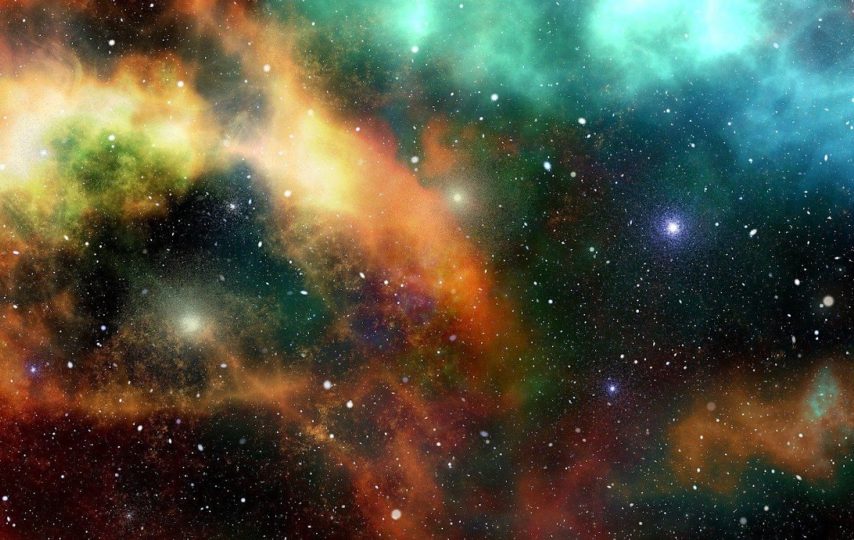A star is a celestial body in which thermonuclear reactions are, have been, or will be taking place. But most often a star is a celestial body in which thermonuclear reactions are going on at the moment.
Types of stars
The universe is arranged so that nothing in it is the same, so each star is individual. Nevertheless, scientists distinguish certain types of stars. Classification can be made by their mass, the spectrum of luminescence, as well as by the stages of evolution. And some stargazing gifts, like a telescope, can help you see at least a few of them.
Main-sequence stars
This is a stage in the life of the star, in which the energy of radiation is fully compensated by the energy of thermonuclear reactions occurring in its center. The luminosity of such stars can be different, depending on the specific type of reaction. Scientists distinguish the following types of stars in this class:
- blue
- white-blue;
- white;
- white-yellow;
- yellow;
- orange;
- red.
Blue stars have the highest temperature; red stars have the lowest temperature. The sun belongs to the yellow varieties of stars, its age is just over four and a half billion years, and the temperature is indicated by scientists for:
- The core -13,500,000 K;
- the corona 1,500,000 K.
For comparison, the hottest star known to mankind has a surface temperature of 200,000 degrees. This is the central star in a planetary nebula called the Beetle.
Source https://www.pexels.com/ru-ru/
Giants and Supergiants
Astronomers estimate the size of stars by comparing them to the mass and radius of the Sun. Giants are considered to be luminaries that have a diameter and mass tens of thousands of times greater than the Sun. A red giant is one of the stages of the evolution of the star. The diameter of the luminary increases by the time hydrogen burns out in its core.
The glow of the red-hot gases expands rapidly over millions of kilometers, but their temperature is relatively low. Giants can be not only stars of the red spectrum. Among the largest are VY Big Dog, VV Cepheus A, KW Sagittarius, and others.
Dwarfs
Dwarfs are those types of stars that have a diameter much smaller than the diameter of the Sun. Scientists distinguish:
- white dwarfs (cooling stars with a small mass in the stage following the Red Giant);
- yellow dwarfs (sometimes referred to as stars equal to the Sun in temperature, radius, and mass);
- brown dwarfs (recently discovered types of stars with very weak luminosity, in the bowels of which there are no thermonuclear reactions, they are often positioned as planets);
- red dwarf (small stars with a diameter of no more than one-third the diameter of the Sun, relatively cold);
- black dwarf (the final stage in the evolution of a star with a small mass, completely cooled and lifeless).
Variable stars
This type is represented by objects whose brightness and dynamics have changed at least once for one reason or another. The types of variable stars are numerous; they are:
- pulsating;
- rotating;
- eruptive;
- new and other unstable and poorly predictable stars.
Variable stars include, for example, blue bright stars, new stars, and hypernovae. They are all specific and poorly understood, each the result of gravitational forces and resistance of matter, but all types of stars are unique and virtually unpredictable in their evolution.
Complex luminaries
In addition to single large, medium, and small stars, there are also double, triple, and even systems of luminaries. If we talk about double stars, the following known forms of their existence should be highlighted to scientists:
- Two stars interacting only through gravitational forces;
- two stars exchanging matter;
- a star and a black hole.
There are other related systems with different shapes, orientations of bodies relative to each other, as well as temperature, rotation speed, and other indicators. However, scientists call them star systems. A custom sky map can help you see each of these in more detail. Black holes, by the way, are also considered stars, as this is one of the stages of their evolution. Although such a body does not emit light, it still has several characteristics typical of stars.
Source https://www.pexels.com/ru-ru/
Stellar sequences – stages of stellar evolution
The evolution of even a single star cannot be traced over the lives of several generations. The lives of the shortest-lived stars are counted in millions of years. Humanity does not live that long. Therefore, it is possible to trace stellar evolution from the beginning – the birth of a star – to its end by comparing the chemical and physical characteristics of stars at different stages of evolution.
The main indicator of the physical properties of a star is its luminosity and color. Based on these characteristics, stars are grouped into groups, which are called sequences. There are several of them: the main sequence, the sequence of supergiants, bright and faint giants. There are also subgiants, subdwarfs, and white dwarfs.
These funny names reflect the different stages of a star’s state that it goes through during its evolution. Two astronomers, Herzsprung and Ressel, made a diagram that relates a star’s surface temperature to its luminosity. The temperature of a star is determined by its color. It turns out that the hottest stars are blue and the coldest stars are red. When Hertzsprung and Ressel placed stars with known physical characteristics – luminosity-color (temperature) – on the diagram, they appeared to be arranged in groups. We got a pretty funny picture, where the place of the star on it determined what stage of evolution the star was at.
Most of the stars (almost 90%) turned out to be on the main sequence. This means that the star spends most of its life in this place of the diagram. The diagram also shows that the smallest stars – dwarfs – are at the bottom and the largest – supergiants – at the top.
Three evolutionary paths of stars
The time allowed for a star to live is determined primarily by its mass. The star’s mass also determines what it will become when it ceases to be a star. The greater the mass, the shorter the life of the star. The most massive ones, the supergiants, live only a few million years, while most moderately massive stars live about 15 billion years.
All-stars, after they run out of the energy source that keeps them alive – burning brightly – begin to cool quietly, shrink in size, and shrink. They shrink into a massive compact object of very high density: a white dwarf, a neutron star, and a black hole.
Small-mass stars withstand compression because gravity is relatively low. They are compressed into a small white dwarf and remain in this stable state until their mass increases to a critical value.
If the star’s mass is greater than the critical value, it continues to shrink until the electrons “stick together” with the protons, forming neutron matter. Thus, we get a small neutron ball with a radius of a few kilometers – a neutron star.
What is a white dwarf? Something that hasn’t become a neutron star or a black hole
This is what medium and small stars turn into at the end of their evolution. The thermonuclear reactions are over, but they remain very hot dense gas balls. Stars slowly cool down, glowing bright white light. The fate of a white dwarf also awaits our Sun, as its mass is below the critical mass. The critical mass is 1.4 solar masses. This value is called the Chandrasekar limit. Chandrasekar is the Indian astronomer who calculated this value.
The neutron star state ends the evolution of such stars whose mass exceeds the solar mass by several times. A neutron star arises as a result of a supernova explosion. With a mass 1.5-2 times that of the Sun, it has a radius of 10-20 km. A neutron star rotates rapidly and periodically emits streams of elementary particles and electromagnetic radiation. Such stars are called pulsars. The state of a neutron star is also determined by its mass. The Oppenheimer-Wolkov limit is a value that determines the maximum possible mass of a neutron star. To be stable in this state, its mass must not exceed three solar masses.
If the mass of a neutron star exceeds this value, the monstrous force of gravity compresses it so tightly in the embrace of collapse that it becomes a black hole.
If the mass of the star is so enormous that gravity continues to compress even the neutron matter, a gravitational collapse occurs, after which a black hole is formed in place of the giant star.
A black hole is what you get when the gravitational compression of massive bodies is unlimited, i.e. when a star is compressed to the point where it becomes completely invisible. No ray of light can leave its surface. Here, too, there is an index that determines the state of a cosmic object as a black hole. This is the gravitational radius or Schwarzschild radius. It is also called the event horizon because it is impossible to describe or see what happens inside a sphere with such a radius at the place of a collapsed star.
Maybe inside this sphere, there are beautiful bright worlds or an exit to another universe. But to a mere observer, it is simply a gap in space that swirls around the light coming from other stars and absorbs cosmic matter. By the way, other cosmic objects behave next to it, we can make assumptions about its properties.
For example, we can assume that the most massive black holes are located in the place where there is the brightest glow of star clusters. By attracting stellar matter and other cosmic objects, black holes make them glow, surrounding themselves with a bright luminous halo – a quasar. Darkness cannot exist without light, and light exists thanks to darkness. The evolution of stars proves this.



